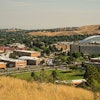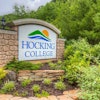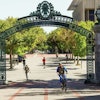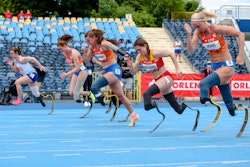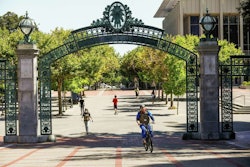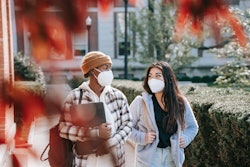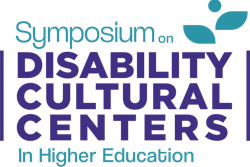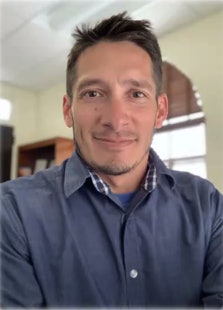 Dr. Michael Martinez
Dr. Michael Martinez
“I followed the book,” he said. “I gave the test from the book, which was paper and pencil. Students had to read the questions and write their answers.”
Upon grading, he realized that one of his students did not perform as well as expected. So, Martinez consulted with his mentor teacher and created a different assessment. He took the student to another classroom, bringing with him a globe, two balls to represent the sun and the moon, and a flashlight.
“I asked the student to describe, with the props, the moon and sun cycle,” said Martinez. The student did so “to perfection.”
Martinez’s suspicion was confirmed. The student wasn’t failing due to a lack of understanding, Instead, he was struggling with the method of evaluation. This was the first time Martinez learned the flexibility needed to make a pedagogical adjustment on the fly.
Now, Martinez is the director of the Disability and Learning Difference Resource Center at the University of San Diego, where incorporating accommodation into every day instruction is part of his job. He joined other scholars at a panel gathered by the National Association of Diversity Officers in Higher Education (NADOHE) on Thursday, to discuss the imperative of including disability into diversity, equity, and inclusion initiatives. Experts shared methods to not only shift but broaden the disability narrative, incorporating universal design into all aspects of campus life, and creating a cultural change for an environment accessible to all.
Disability is the largest minority group in the U.S. and is a community that anyone can join at any time. Its civil rights movement coincided and collaborated with the Black Panthers, The United Farm Workers of America, and the Butterfly Brigade. Disability and diversity, experts say, go hand in hand.
“The early years [of higher education] placed the burden and responsibility on individuals to be their own best advocate for change,” said NADOHE President Paulette Granberry Russell. “Institutions have at times resisted the need to be intentional about the practices that incorporate diverse abilities as the rule and not the exception.”
More than thirty years after the passage of the Americans with Disabilities Act (ADA) in 1990, “we still find ourselves struggling to ensure we provide more accessible environments and acknowledging the need for those environments to be a more equitable space, truly inclusive for all,” said Granberry Russell.
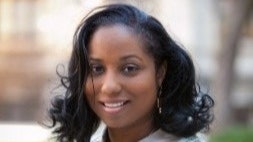 Charnessa Warren
Charnessa Warren
“Can we put ego at the door and remember to be open to suggestions or modifications, even if it’s something the professor and faculty have been doing a long time?” asked Martinez. “Can we post slides or notes online so all have access? Are we ensuring we’re selecting videos to share that have captioning?”
Many of these questions arose during the pandemic, which forced institutions to confront the task of teaching online, when many students didn’t own laptops or have access to functioning wireless.
Jamie Axelrod, director of Disability Resources at Northern Arizona University, said that schools with an established culture of designing for inclusion and accessibility were well positioned during this pivot. They had already developed many of the tools needed to assess student needs and meet them.
“[Those schools] designed their environments, (virtual, academic, and physical) with accessibility in mind,” said Axelrod. “That helped them to address the needs of many students now finding themselves in these unfamiliar environments due to COVID.”
Those institutions were beginning to change the culture around disability on campus, which can be very difficult in a field that was originally not designed to be inclusive, said Charnessa Warren, director of Student Disability Services at the University of Chicago.
“We find higher education to be established to educate our brightest, most intellectually able scholars. This mindset has established admissions hierarchy and serves to exclude those believed to be unqualified,” said Warren. “The impact is deeply embedded ableist policies and limited awareness about accessibility.”
Compliance offices had to be established after passage of the ADA.
“We see students with disability can gain access to higher education without inclusion or a sense of belonging,” said Warren. “If higher education is to move beyond what must be legally done to embrace shared responsibility, there must be the acknowledgment that compliance and culture are separate words. Compliance is focused on the legal obligations—it’s the floor, not the ceiling, of what can be done. Culture is who we are and who we aspire to be.”
To change the culture around disability at the University of Chicago, Warren and her team are implementing a three-step plan to change accessibility on their campus. They are working to acknowledge the prevalence of disability on campus and assess their needs, create an action plan to address those needs and share it widely on campus, and promote accountability for every step involved.
Their mission is to “create normalcy around disability,” said Warren. “Diversity includes disability—we try to socialize this message broadly.”
Still, some institutions fail to collect data on disability.
Cheryl L. Lyons, director of Student Life Disability Services at The Ohio State University, said that when she first started her role, there were no disaggregated data points on the school’s disabled students.
“If our inclusion reports never mention disability, how do we know who is with us?” she asked.
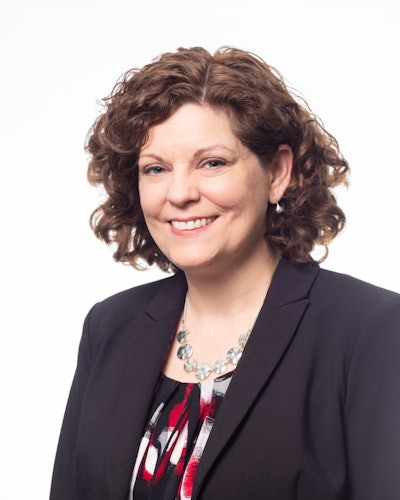 Cheryl L. Lyons
Cheryl L. Lyons
“Many times, different units serve different constituents, perhaps leaving out these with intersectional identities,” said Lyons. “Where does an individual go if they are Black and disabled? Where do they find belonging?”
Adjustments need to be considered within curriculum and team development, moving disability from a realm of charitable interaction to a place of agency and pride. Lyons recommended following disability leaders and hashtags on social media to change the everyday engagement on the issue.
“[You can] start at home, within your sphere of influence, and grow it as much as you can,” said Lyons.
“We have so many students passionate about social justice, yet when I mention disability as social justice work, it seems like a surprise sometimes,” she said. “We have to get people engaged to make sure disability is a part of their daily diversity conversations.”
And, when in doubt, listen to the students.
Paula Possenti-Perez, director of the Center for Disability Resources at Syracuse University in New York, said that she cannot understate the power of student activists on campus. It is through their stalwart advocacy that the university conducted an outside review of its accessibility.
“We asked outside experts to give us, in full breath, a comprehensive review of all our university policies: facilities, tech, academic supports, organizations, and culture,” said Possenti-Perez. "It took several years to complete, but when it was done, “it set the stakes for what was important and what university leadership would be committed to fulfilling.”
Syracuse created the Disability Access and Inclusion Council and charged them with leading the effort to dismantle the structural ableism at the university. Transparency, said Possenti-Perez, is necessary to change culture. Part of her job is to review every request for purchase that comes through the institution. She and her council of faculty, students, and staff, assess whether or not the requested item will help to create an accessible environment.
Every scholar on the panel acknowledged that the work to change disability culture is not easily done. Ableism is “deeply embedded into the infrastructure of our institutions,” said Warren. “Whenever I’m dealing with faculty that give me a hard time, or can’t see why [change] is necessary, I bring them stories that directly relate to them. Bring it home and normalize the idea of disability. You can join at any moment. How would you want the campus to embrace you if you were to become disabled?”
Liann Herder can be reached at [email protected].


